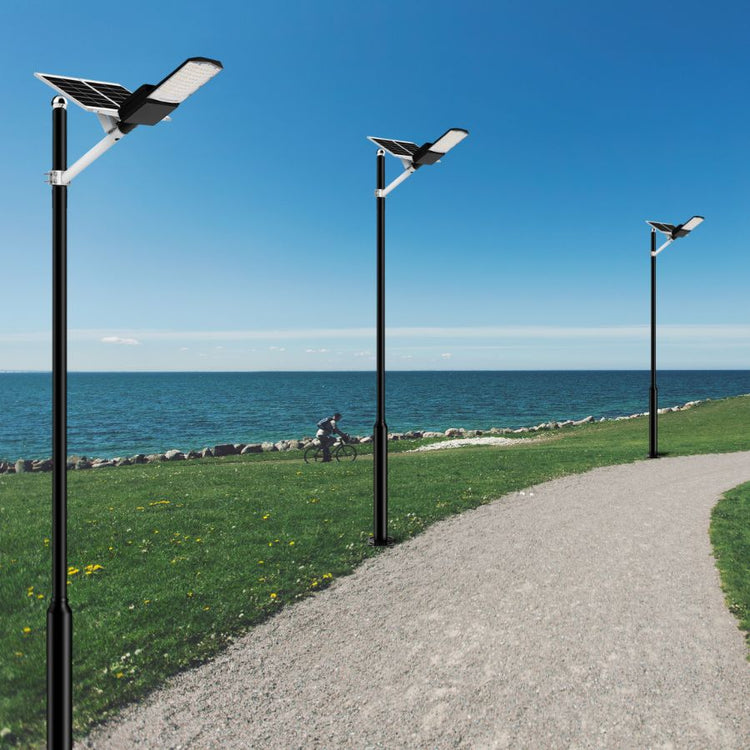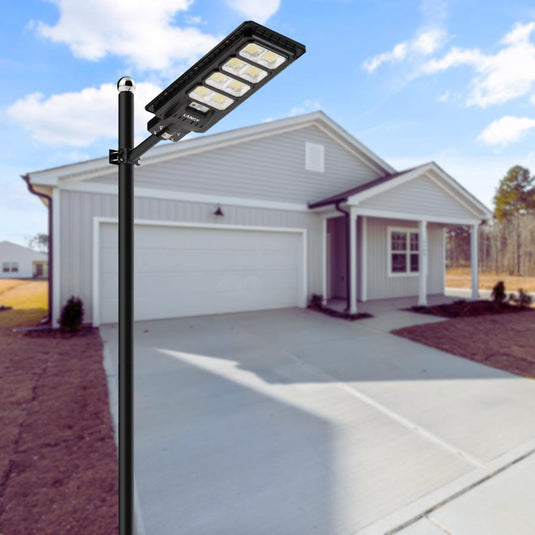
Solar street lights with pole
Solar street lights with a pole
Solar Street Lights with Pole blogs
Basic knowledge
- The Key Features of Solar Bug Zappers: What Makes Them So Effective?
- The Long-Term Value of Investing in a Complete Solar Street Light System
- High Wind and Weather Resistance: The Strength of a Quality Pole
- Beyond the Light: Poles with Smart Technology Integration
- Aesthetic Appeal: Designing with Solar Street Lights and Poles
- Why Prefabricated Poles Simplify Solar Street Light Installation
Advantages and Features
- A Quick Guide to Solar Street Light Pole Heights and Their Uses
- The Role of Foundation and Anchoring in Solar Street Light Poles
- Deciphering Solar Street Light Pole Materials: Steel vs. Aluminum
- How a Solar Street Light with Pole Stays Upright and Durable
- The Anatomy of a Solar Street Light Pole: A Breakdown
- Understanding the All-in-One Solar Street Light with Pole
Buying Guide
- Avoiding Installation Headaches: What to Look for in a Pole and Fixture Kit
- The Cost of Convenience: Understanding Pricing for All-in-One Systems
- A Guide to Solar Street Light Pole Finishes and Coatings
- Top 5 Questions to Ask Before Buying a Solar Street Light with Pole
- Sizing Your Solar Street Light Pole: A Buyer's Checklist
- How to Choose the Right Pole for Your Solar Street Light
Solution
- Troubleshooting Common Pole-Related Issues for Solar Street Lights
- The Complete Package: Installing a Solar Street Light with Pole from Start to Finish
- Custom Solar Street Light Poles: Tailored Solutions for Unique Projects
- Creating Safer Pathways: Solar Light Pole Solutions for Parks and Trails
- Illuminating Roads and Parking Lots: Pole Solutions for Large Areas
- Solar Street Lights with Poles for Gated Communities & HOAs
Solar Street Lights with Pole FAQs
Here are some common questions and answers tailored to the needs of Solar Street Lights with Pole
Q1: How much does a solar street light with a pole cost?
A1: The cost of a solar street light with a pole can vary widely, typically ranging from $500 to $5,000 or more per unit. The price depends on several factors: the pole's height and material (steel or aluminum), the light's brightness (lumens), battery capacity, and the manufacturer's quality. While the upfront cost might be higher than traditional lights, it eliminates expensive trenching and wiring, which leads to significant long-term savings.
Q2: How long do solar street lights last?
A2: A well-made solar street light system is designed for longevity. The key components have different lifespans:
- LED Fixture: Can last for 50,000 to 100,000 hours, which is about 15 to 20 years of typical use.
- LiFePO4 Battery: Typically lasts 5 to 10 years before a replacement is needed.
- Solar Panel: Can last for 20 to 25 years or more with minimal degradation.
- Galvanized Pole: Can last for 30+ years without rust or major maintenance.
- The entire system's useful life can be up to 20 years with proper maintenance.
Q3: Are solar street lights bright enough?
A3: Yes, modern solar street lights are very bright and can be sized to meet a variety of needs. Brightness is measured in lumens. A light for a small pathway might need only 2,000 lumens, while a light for a main road or large parking lot could be 10,000 lumens or more. The key is to choose a system with enough lumens and the correct pole height to provide the necessary illumination for your specific application.
Q4: How to install a solar street light pole?
A4: Installing a solar street light with a pole is a much simpler process than a traditional light. It typically involves three main steps:
- Foundation: Dig a hole and pour a concrete foundation with anchor bolts set using a template.
- Assembly: Assemble the all-in-one light fixture and secure it to the pole.
- Erection: Lift the entire pole and bolt it to the cured concrete foundation.
- The process is clean and efficient, as there's no need for complex trenching, wiring, or electrical permits.
Q5: Do solar street lights work in winter or on cloudy days?
A5: Yes, they are designed to work in all weather conditions. High-quality systems use a high-efficiency solar panel that can still generate power from ambient light on cloudy days. Additionally, they have a large-capacity battery (with 3-5 days of autonomy) to store enough energy to power the light through multiple consecutive cloudy days and long winter nights.
Q6: What is the best solar street light for a private road or parking lot?
A6: The best solution is typically an all-in-one system with a pole. These are ideal because they require no trenching or external wiring, which significantly reduces installation costs and disruption. For large areas, it's best to choose a pole with a height of 20-30 feet and a light with a high lumen output (8,000+ lumens) to ensure wide, uniform coverage.
Q7: How to choose the right height for a solar street light pole?
A7: The right height depends on the application. A general rule is to choose a height that is approximately 1.5 times the width of the area you want to illuminate.
- For pathways and sidewalks, 10-15 ft is common.
- For residential streets, 15-20 ft works well.
- For main roads and large parking lots, 25-30 ft is standard.
- Remember, taller poles require brighter lights to achieve the same ground-level illumination.
Q8: What is the difference between an all-in-one and a split solar street light?
A8: The key difference is the component layout.
- All-in-One (Integrated): The solar panel, battery, and light are combined into a single, compact unit that mounts on top of the pole. This design is easy to install, has a clean aesthetic, and is highly secure.
- Split (Modular): The solar panel, battery box, and light fixture are separate components. The panel is typically mounted above the light, and the battery box is installed at the bottom of the pole or on the ground. This design can be more adaptable for specific projects but is more complex to install and is vulnerable to theft.
Q9: Are solar street lights with poles a good investment?
A9: Yes, they are an excellent long-term investment. While the initial purchase price might be higher than a traditional light, the system offers a high return on investment (ROI) by providing significant savings on installation labor (no trenching), eliminating recurring electricity bills, and having minimal maintenance costs over its long lifespan. They also provide a resilient, off-grid solution that continues to work during power outages.
Q10: How do I troubleshoot a solar street light that isn't working?
A10: Most troubleshooting is simple. Start with the basics:
Check the Solar Panel: Make sure it's clean and free of dirt, leaves, or snow, which can block sunlight and prevent charging.
Verify Placement: Ensure the panel is not in a shadow from a tree or building.
Check the Battery: The battery might be fully drained. Give the light a few sunny days to fully recharge.
Confirm the Switch: Check if there is an on/off switch on the unit and ensure it's in the "on" position.
If these steps don't solve the issue, it may indicate a problem with the internal wiring or the battery itself, which may require professional help.
Still have questions? Contact us : support@langyenergy.com and we'll be happy to help!



